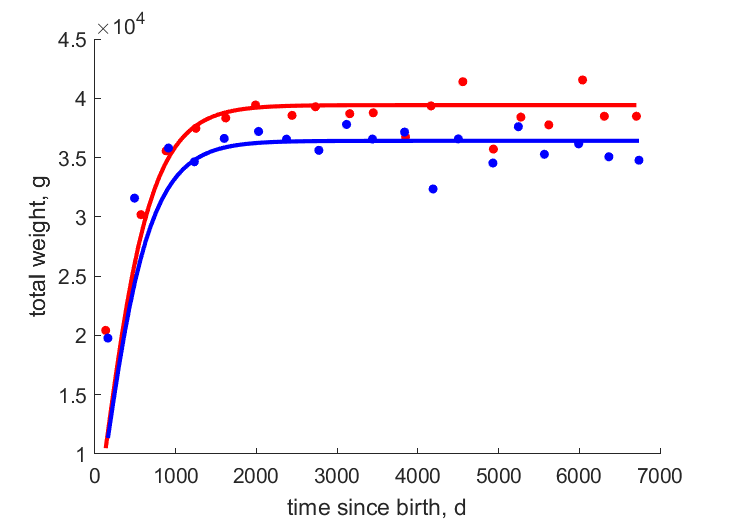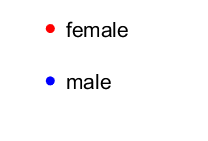Predictions & Data for this entry
| Model: stx | climate: Cfa, Dfa, Dfb | migrate: | phylum: |
| COMPLETE = 2.5 | ecozone: THp | food: bxM, xiHl | class: |
| MRE = 0.036 | habitat: 0iTd, 0iTht, 0iTf | gender: Dg | order: |
| SMSE = 0.004 | embryo: Tv | reprod: O | family: |
Zero-variate data
| Data | Observed | Predicted | (RE) | Unit | Description | Reference |
|---|---|---|---|---|---|---|
| tg | 215 | 208.8 | (0.02892) | d | gestation time | AnAge |
| tx | 122 | 122 | (0.0001166) | d | time since birth at weaning | guess |
| tp | 1095 | 1047 | (0.04369) | d | time since birth at puberty | AnAge |
| am | 8760 | 8866 | (0.01213) | d | life span | AnAge |
| Wwb | 3511 | 3539 | (0.008085) | g | wet weight at birth | AnAge |
| Wwi | 4e+04 | 3.943e+04 | (0.01434) | g | ultimate wet weight females | Miur1986 |
| Wwim | 3.5e+04 | 3.641e+04 | (0.04036) | g | ultimate wet weight males | Miur1986 |
| Ri | 0.00274 | 0.002689 | (0.01845) | #/d | maximum reprod rate | AnAge |
Uni- and bivariate data
| Data | Figure | Independent variable | Dependent variable | (RE) | Reference |
|---|---|---|---|---|---|
| tW_f |   | time since birth | total weight | (0.04388) | Miur1986 |
| tW_m |   | time since birth | total weight | (0.05413) | Miur1986 |
Pseudo-data at Tref = 20°C
| Data | Generalised animal | Capricornis crispus | Unit | Description |
|---|---|---|---|---|
| v | 0.02 | 0.1867 | cm/d | energy conductance |
| kap | 0.8 | 0.7098 | - | allocation fraction to soma |
| kap_R | 0.95 | 0.95 | - | reproduction efficiency |
| p_M | 18 | 17.81 | J/d.cm^3 | vol-spec som maint |
| k_J | 0.002 | 0.0006542 | 1/d | maturity maint rate coefficient |
| kap_G | 0.8 | 0.8005 | - | growth efficiency |
| k | 0.3 | 0.288 | - | maintenance ratio |
Discussion
- Slow foetal development is assumed
- Males are assumend to differ from females by {p_Am} only
- Body temperature is guessed based on Rupicapra
- mod_1: males have equal state variables at b, compared to females
Bibliography